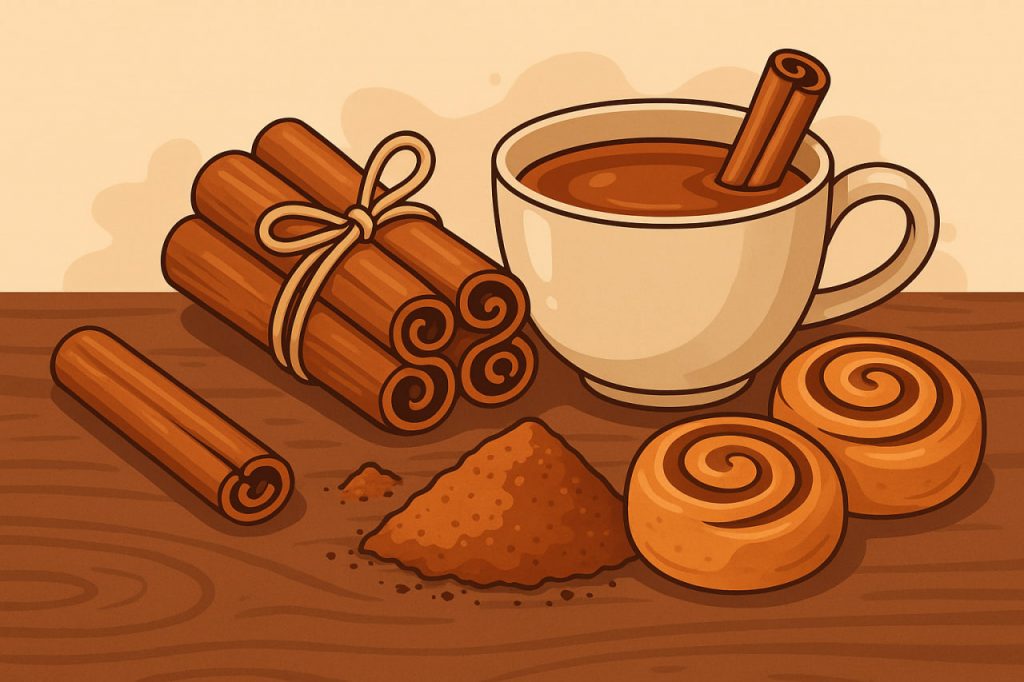Cinnamon is one of the oldest known spices, valued for its rich aroma, sweet-warm flavor, and medicinal properties. It is obtained from the inner bark of trees from the genus Cinnamomum. Throughout history, cinnamon has been used not only as a seasoning but also as a preservative, incense, and natural remedy. Today, it remains popular in both culinary and health traditions around the world.
Types of Cinnamon
- Ceylon cinnamon (Cinnamomum verum)
- Known as “true cinnamon.”
- Has a delicate, sweet flavor.
- Contains low levels of coumarin (a natural compound), making it safer for frequent use.
- Cassia cinnamon (Cinnamomum cassia)
- Darker, stronger in taste, and more common in supermarkets.
- Contains more coumarin, which in high amounts may affect the liver.
Nutritional and Active Compounds
- Cinnamaldehyde – gives cinnamon its characteristic smell and flavor; has antibacterial and antifungal properties.
- Polyphenols – powerful antioxidants that protect the body from free radicals.
- Manganese, calcium, and iron – essential minerals for metabolism and bone health.
Health Benefits
- Antioxidant protection – Helps reduce oxidative stress and cell damage.
- Blood sugar regulation – Some studies show cinnamon may improve insulin sensitivity.
- Anti-inflammatory effects – Reduces chronic inflammation linked to many diseases.
- Heart health – May help lower cholesterol and triglycerides.
- Antimicrobial action – Effective against bacteria and fungi, including foodborne pathogens.
Potential Risks
- Excess coumarin (especially from Cassia cinnamon) may stress the liver if consumed in large amounts daily.
- Possible allergic reactions in sensitive people.
- Should not replace medical treatment for chronic diseases.
Culinary Uses
- Added to baked goods, desserts, and beverages (such as tea, coffee, mulled wine).
- Used in savory dishes in Middle Eastern, Indian, and Asian cuisines.
- Combined with honey or fruit for natural remedies and flavoring.
Conclusion
Cinnamon is not only a delicious spice but also a source of valuable bioactive compounds. While moderate amounts may support health and enhance meals, it is important to use it wisely and prefer Ceylon cinnamon for regular consumption. In both traditional and modern diets, cinnamon remains a symbol of warmth, flavor, and natural healing.
Glossary
- Cinnamaldehyde – main active compound responsible for cinnamon’s aroma and effects.
- Polyphenols – antioxidants that protect cells from damage.
- Coumarin – a natural compound found in some cinnamon varieties, toxic in large amounts.
- Insulin sensitivity – how well the body responds to insulin in regulating blood sugar.
- Oxidative stress – damage caused by free radicals to cells and tissues.


